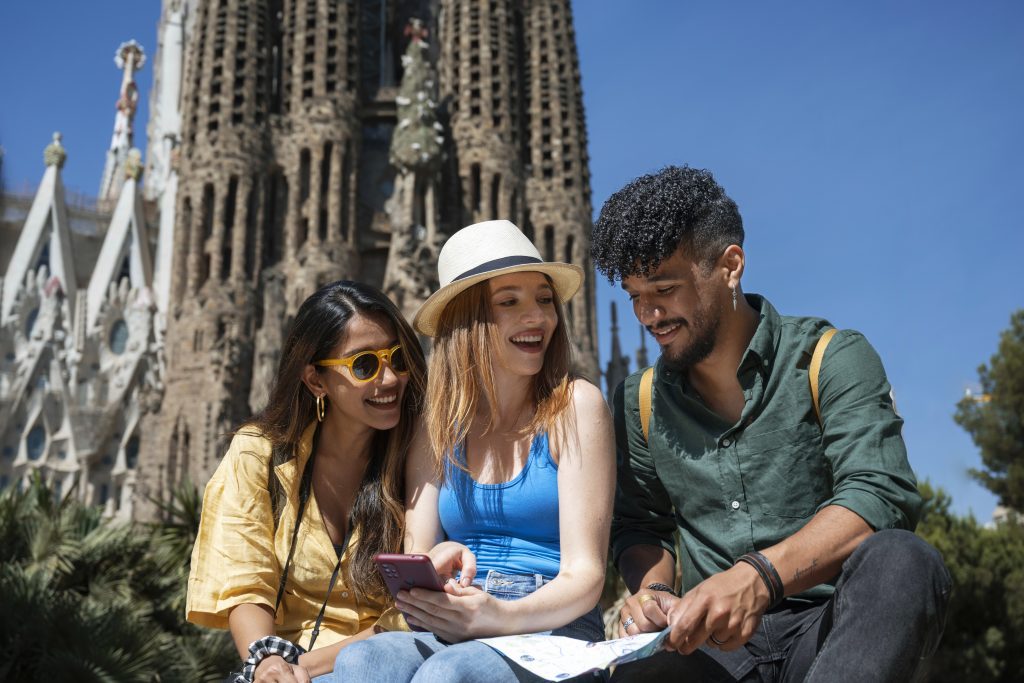Easter has firmly established itself as one of the top times of year for spontaneous getaways. More and more travelers are choosing to wait until the very last minute to decide on their destination, driven by the flexibility of the digital environment and the flash deals flooding their screens. But how can travel brands make the most of this trend? In this article, we break down the keys to capturing the attention — and bookings — of these spontaneous travelers.
The Era of “Last-Minute” Travel Is Here to Stay
This is no passing trend. Last-minute booking, especially via mobile devices, has become a standard behavior among today’s travelers. Smartphones have become the compass for those who decide to embark on an Easter adventure without prior planning.
Mobile as a Catalyst for Last-Minute Bookings
The widespread availability of smartphones has put a whole world of travel opportunities at travelers’ fingertips. There’s no longer a need to sit at a desktop computer to book a flight or find accommodation — just a few taps on a mobile screen will do.
This instant access to travel options is radically changing how far in advance people plan their getaways. During Easter, searches for “last-minute getaways” skyrocket in the days leading up to the holiday, opening up a critical window for capturing bookings.
Micro-Trips and Urban Escapes: Easter Favorites
Last-minute travelers typically aren’t looking for long vacations — they’re after short but intense breaks. That’s why urban escapes or nearby rural retreats have become the go-to choices.
These destinations offer the perfect blend of convenience, accessibility, and the chance to discover hidden gems without traveling far. Plus, a strong offering of local activities adds extra appeal for those ready to jump into a spontaneous trip.

Key Strategies to Capture Mobile Last-Minute Travelers
Understanding the mindset of these travelers is essential. They’re not just looking for speed — they want trust and added value. The key lies in anticipating their needs and removing any friction that might slow down the booking process.
Keep in mind: this audience is making decisions in the heat of the moment. So your strategy needs to be as dynamic as they are.
1. Truly Optimize the Mobile Experience
While many websites are technically “responsive,” few deliver a truly seamless mobile experience. Load times, ease of comparison, and a simple payment process are all critical to keeping an impatient traveler engaged.
Remember: these travelers are ready to decide on the spot. Every second counts, and every extra click is a missed opportunity. Also, consider adding features such as:
- Autofill data to speed up the booking process.
- Digital wallets for one-tap payments (Apple Pay, Google Pay…).
- Live chat or virtual assistants to quickly address any last-minute questions.
On top of that, continuously monitor your mobile site’s load speed and watch out for errors or crashes during peak times like Easter.
2. Personalize Offers in Real Time
Personalization isn’t just a competitive edge anymore — it’s an expectation. Use analytics tools and data insights to deliver recommendations tailored to user behavior, location, and recent searches.
For example, if a user is searching for last-minute getaways from Barcelona, don’t show them generic offers. Instead, highlight direct options for Costa Brava escapes, urban breaks in Girona, or rural packages in inland Catalonia, with immediate availability and limited-time promotions.
You can also leverage contextual data: is it raining where the user is? Highlight destinations with sunny weather. Searching at night? Suggest weekend escapes departing the very next day.
The goal is to anticipate their needs — sometimes before they even express them.
3. Harness the Power of Social Media
Social media is the natural habitat for spontaneous travelers. It’s where they discover destinations, get inspired, and — most importantly — expect to find fast solutions.
Highly targeted paid campaigns, quick-hit recommendation videos, and collaborations with content creators can skyrocket the visibility of your Easter offers. But don’t stop at paid ads.
Consider organic strategies too, like:
- Creating “last-minute ideas” lists that showcase easily accessible Easter destinations.
- Using polls or interactive stickers in Stories to boost engagement (“What’s your ideal Easter plan? 🏖️ 🌿 🏙️”).
- Sharing real testimonials from travelers who booked last-minute and enjoyed an unforgettable experience.
And don’t forget to include direct booking links to reduce steps. The shorter the distance from inspiration to action, the higher your chances of conversion.
4. Clearly Highlight Availability and Urgency
Last-minute travelers don’t want to waste time on unavailable options. Use clear messages like “Last rooms available,” “Instant confirmation,” or “Available this weekend.”
Urgency tags significantly boost conversion rates among this fast-moving audience. Flash sales and countdown promotions are also powerful tools here.
Additionally, enable push alerts or app notifications to inform users about new last-minute deals. That way, you stay top of mind when their booking intent peaks.
What Last-Minute Travelers Really Expect: Beyond Price
While attractive deals are a powerful hook, other factors play a key role in convincing last-minute travelers. Understanding these motivations is essential to crafting an irresistible offer.
Flexibility Above All
Flexibility in changes and cancellations has become essential for impulsive bookings. The less risk the traveler perceives, the more likely they are to book.
Offering transparent policies and flexible conditions builds trust and encourages them to complete their booking without fear of unexpected issues.
Authentic and Local Experiences
Beyond a hotel room or train ticket, this traveler profile is seeking memorable experiences. Packages that include authentic activities — like foodie tours, outdoor adventures, or cultural excursions — add significant value.
These experiences enrich their stay and allow last-minute travelers to enjoy a more complete getaway, even if it was arranged in just minutes.

Easter: A Perfect Testing Ground for Strategies
Easter provides the perfect backdrop to test new customer acquisition tactics. The sense of urgency encourages experimentation with different messaging, creative formats, and advertising styles to see what truly resonates with your audience.
Monitor data in real time, adjust your campaigns on the fly, and take notes for future seasons. The insights you gather during this period could make all the difference in your upcoming strategies.
Conclusion: The Opportunity Lies in Immediacy
In a world where decisions are increasingly made on the go, being ready to capture the attention of last-minute travelers isn’t optional — it’s essential. Easter offers a unique opportunity to showcase your brand’s agility and the relevance of your offering.
Fine-tune your mobile channels, personalize your offers, and connect with your potential customers at the exact moment they’re searching for their next adventure. Remember: it’s not just about making a sale, but about delivering the promise of an unforgettable experience.






